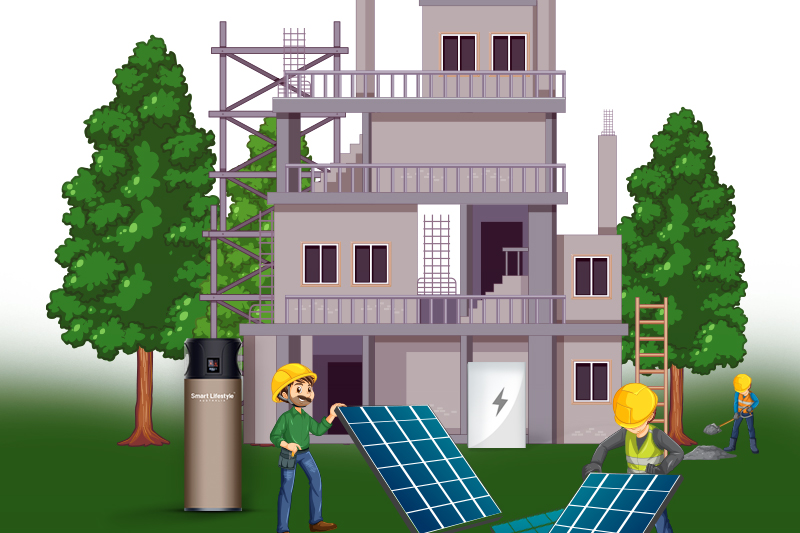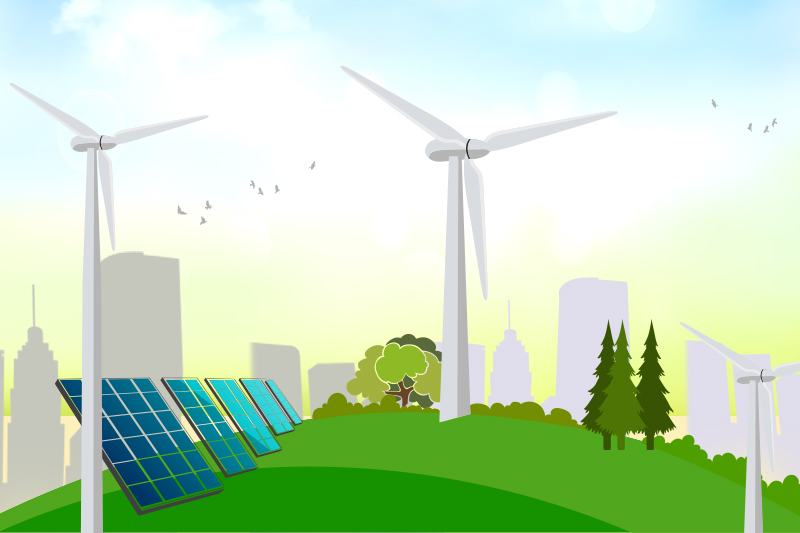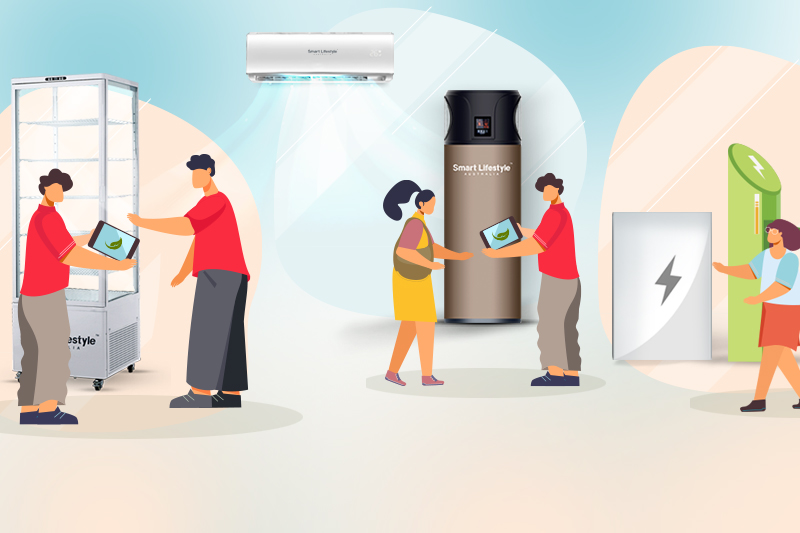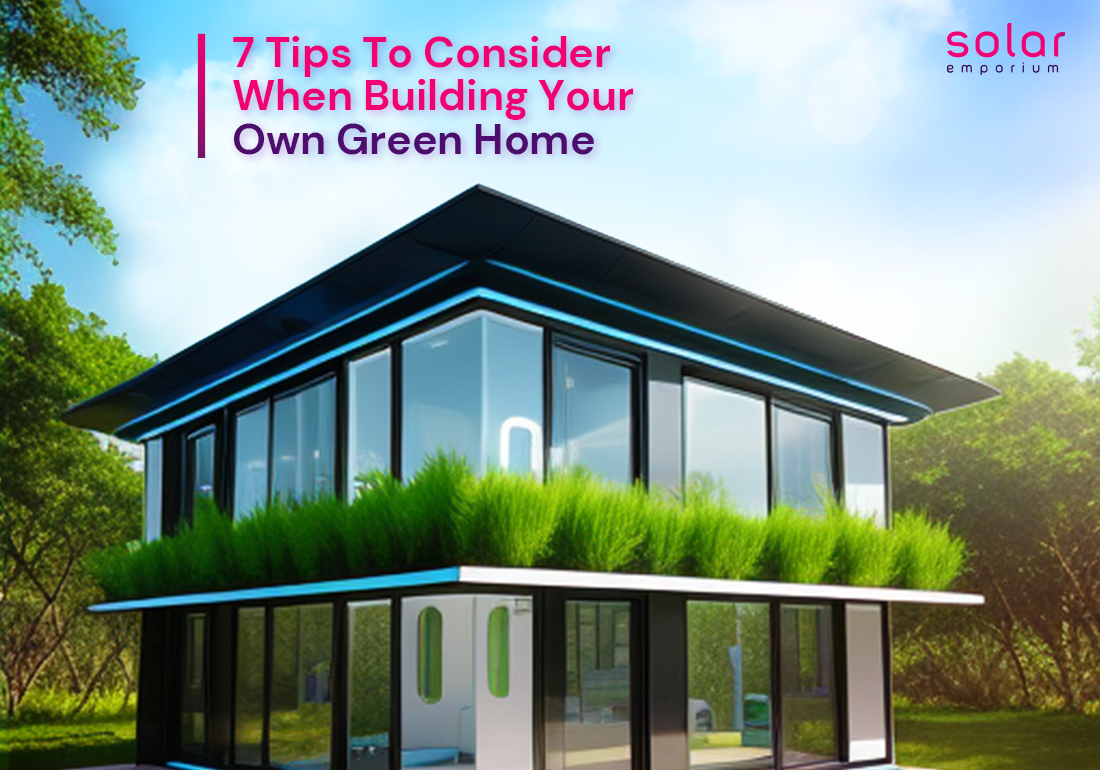Many people in Australia are willing to live more sustainably. They have already made energy efficiency a choice. And the option is to have a green home.
Consequently, many more are interested in building a green home. So, how do you build a green home? Here are seven tips to consider when building your own green home.
Interestingly, many principles of green architecture are not modern; they date back to ancient civilisations.
Long before HVAC systems and glass windows, living spaces were constructed to encourage natural airflow, optimise daylight, and depend on natural methods for heating and cooling.
Nowadays, there are various possibilities, both significant and minor, rooted in nature or reliant on technology, for adopting more environmentally friendly practices.
What is a Green Home/Sustainable Home?
A sustainable home is a house that is made to be kind to nature. It uses less energy and water by using eco-friendly systems and materials. These materials are suitable for the environment because they are made well, sent efficiently, and put in quickly.
According to the World Green Building Council, a “green building” reduces potential environmental harm while increasing the ecological benefits it generates over its lifecycle.
Building design is the first step, followed by construction, operation and occupation, renovation, and demolition.
Green building design and construction take into account a wide range of variables. Many of these variables are plot, neighbourhood, and climatic region-specific.
How To Build a Green Home?
When you’re planning to build a new home, you should think about where it will be, how big it will be, and which way it will face. A sustainable design uses natural light and air to keep the house warm or cool. It saves energy and helps the environment by using less power.
The size and layout of the home also matter. Smaller homes are better for the environment because they need fewer materials and more energy saving.
Even though small homes aren’t the right choice for everyone, when you’re building a sustainable home, it’s essential to use your resources wisely and only have as much space as you really require.
Building a sustainable house has many benefits. It helps you use less water and energy, reducing waste. Thinking about the future and using proper materials and design will make your home last a long time. So, a sustainable home is good for you and the planet.
What are the 7 Tips To Consider When Building Your Own Green Home?
Green building employs design and planning strategies to reduce the negative environmental impacts of buildings.
These strategies are not only appealing to property investors, but they are also beneficial to homeowners’ health and cost efficiency.
Property Details, Location, and Landscaping

Property details are crucial when building a green home in Australia, as they directly impact the overall sustainability and efficiency of the construction.
The orientation, size, and features of the property influence how well the home can harness natural resources such as sunlight and wind.
Selecting a location with optimal sun exposure allows for effective passive solar design, reducing the reliance on artificial heating and cooling systems.
Additionally, property details inform decisions about landscaping, enabling the incorporation of eco-friendly elements like native plants or surfaces.
Foundation of An Energy-efficient system
The foundation of a building influences both its environmental impact and long-term sustainability. A well-designed foundation minimises disturbance to the local ecosystem.
Additionally, the choice of foundation materials and construction techniques can impact energy efficiency.
Thus, careful consideration of the foundation is essential in creating a green home that aligns with sustainable building practices in Australia.
Solar Passive Design
In your home, the things that use up the most energy are usually the heating and cooling systems, especially if you have an air conditioner.
But there’s a smart way to make your home stay warm or cool without using a lot of electricity. It’s called solar passive design.
Solar passive design means that your home can naturally warm up and cool down by itself without needing a bunch of plugs or wires. This happens because of how the house is designed.
Planting trees around your house, especially ones that lose their leaves in the winter, can also help by providing shade in the summer and letting in more light in the winter.
So, by using the sun and thinking carefully about your house design, you can make your home comfortable without using as much energy as a regular air conditioner.
Plan for Solar or Renewable Energy

In a sunny country like Australia, it’s a smart idea to consider setting up a solar panel system and solar battery for your new home. Solar energy is not only cheaper but also cleaner.
Making the switch to solar is a significant move toward creating a more eco-friendly and financially sustainable home.
Even if you’re not ready to invest in solar panels right away, it’s a good idea to design your roof in a way that allows for their installation in the future. When you are ready to explore solar options, don’t forget to check out Solar Emporium.
The advantages of solar energy are well-known, whether you want to lower your power bill or eventually become independent of the grid.
Buy Eco-Friendly Appliances and Materials
Using paints that are good for the environment is better for both nature and your health. Many regular colours contain chemicals called volatile organic compounds (VOCs), and these chemicals can turn into vapours in the air, especially inside your home.
If you’re painting over walls made from eco-friendly or recycled materials, the benefits grow even more.
Reclaimed wood and recycled steel are excellent choices that help the environment by reducing waste without compromising your house’s strength.
You can also lower your carbon footprint and give your house a unique touch by using sustainable materials like cork floors, bamboo walls, and sheep’s wool insulation.
Using smart appliances also makes your home eco-friendly. Go for our smart heat pump and aircon to have a green home.
Compost and Recycle
Australia throws away about 7.6 million tonnes of food every year, which is about 300 kg per person. It happens because some food stays on the farm, and stores reject certain products. This leads to losing about $36.3 billion worth of food each year.
Composting is a great way to reduce how much food you throw away at home. Food scraps, even things like banana peels and apple cores, can go into your garden, helping your plants grow while also cutting down on what goes to the landfill.
And don’t forget the difference between biodegradable and compostable bin bags. Biodegradable bags break down easily, but they still leave tiny bits of plastic in your garden.
Update A Proper Home Filtration System
Having a filter for your entire home is excellent for the environment. When your whole house has clean, soft water, it helps your pipes, faucets, and water-using machines last longer.
Imagine spending extra money on an energy saving kettle only to have it get ruined by limescale in just a few years. A good filter also makes your hot water system work better, using less energy.
A home filter also reduces the chemicals that end up outside your home. Softer water means you can use fewer cleaning chemicals and still get the job done.
Benefits of A Green Home
Energy Savings

Energy efficiency stands out as a critical feature of eco-friendly construction. It benefits both the environment and building owners by significantly cutting costs.
Elements like building insulation, double-paned windows, strategic window placement, sun shading, and cool roofs are effective in reducing a building’s heating and cooling expenses.
Although green building certifications frequently evaluate the impact of design on energy efficiency, operational practices also wield considerable influence.
In addition to thoughtful design, building owners should opt for energy-efficient appliances and strive to reduce electricity consumption.
Efficient Use of Materials
Achieving the design goals of a building while using the minimum amount of materials is a positive aspect of environmentally friendly construction.
Designers carefully explore ways to reduce material surplus and waste through thoughtful building design and careful selection of materials.
Design principles, which assess the overall impacts throughout a building project’s life cycle, enable designers to pinpoint crucial areas for enhancement, such as integrating recycled, reused, or biodegradable materials.
Natural Ventilation and Illumination
Architectural designs that take into account the natural flow of air and sunlight enable buildings to harness these elements for practical purposes. Instead of relying on electric fans, why not let the wind naturally circulate air throughout the building?
Similarly, why use electric lighting in daylight when strategically positioned windows can invite natural light?
These design considerations reflect a holistic approach that reduces reliance on technology in green buildings.
Promotes Healthier Living
Green buildings minimise the use of toxic materials and emissions, prioritising healthy ventilation and providing access to mood-boosting natural sunlight.
Improving indoor air quality can be achieved through the incorporation of air-purifying potted plants and well-designed ventilation systems.
Additionally, reducing sources of air pollution involves using non-toxic materials, environmentally friendly cleaning agents, and electric stoves.
Cost-effectiveness
While green buildings may seem more valuable due to their advantages, they rely on economically sound construction approaches to alleviate the financial strain on building owners.
Economies stem from tactics such as repurposing materials during renovations, enhancing short-term costs, and incorporating energy efficiency into the design, leading to long-term savings on heating expenses.
Numerous regions, including Australia, provide financial incentives that encourage developers or current building owners to adopt green building strategies.







